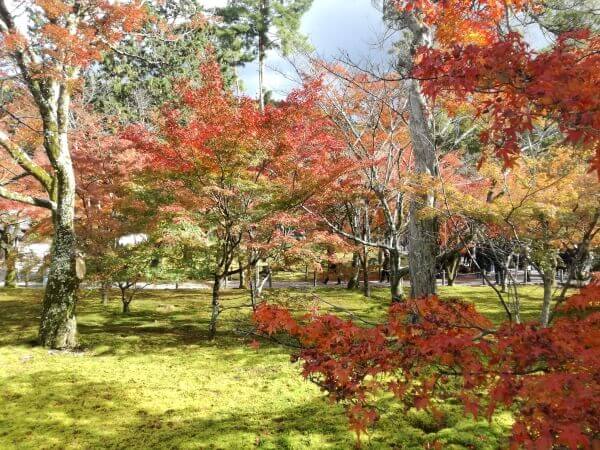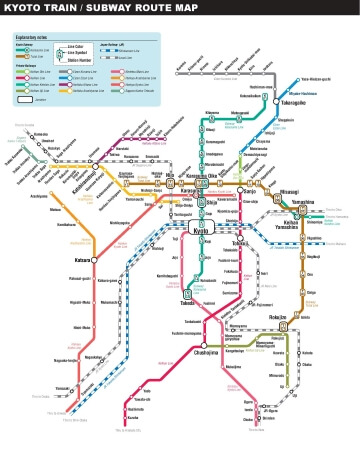Sorry, I was miles away. I was just looking out the window at the turning leaves. For a moment I was transported back to before the pandemic. Autumn is such a special time in Japan. I regret that I can’t enjoy it as I usually do.
Anyway, I’ll continue my daydream, please do join me.
Arrival
Bing, bong “mamonaku kyōto desu.”
Excellent, we’ll arrive in Kyoto soon. It’s a beautiful city in any season but a magical one in autumn. Its 1,600 temples make Kyoto an autumn cave of wonders. Each has its own garden and each garden has its own character. This is the magic of Kyoto. A temple garden exists for any taste at every stage of life. The infinity is intoxicating.
What makes autumn in Japan so special?
Well, to start, the crescent geography of Japan means the climate of its islands and regions vary greatly. Seasons tend to unfurl across several months. Take autumn for example, waking in Hokkaido in mid-September, it wanders down Honshu to complete the journey in early December.
The slower pace of a Japanese autumn allows us to enjoy the activity of this daydream; kōyō viewing. What’s that? It’s better if you see it. 紅葉 (kōyō) is the Japanese word that describes the changing colour of leaves in autumn. The first character is crimson, the second leaf. While none of autumn’s broad colour palette is excluded, crimson’s presence perhaps points to the heart of this season.
Bing, bong “kyōto desu.” We’re here.
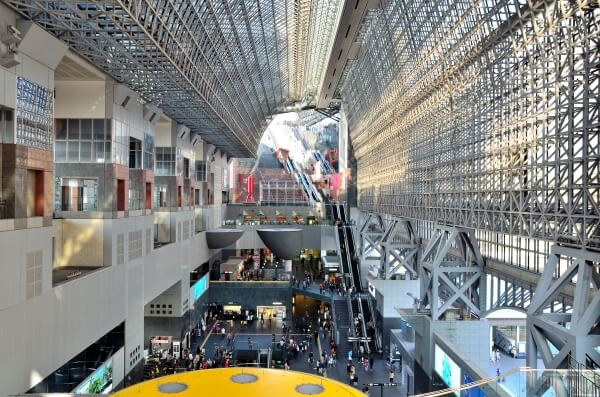
Tofukuji
Our first destination is the major Buddhist temple complex of Tofukuji. It’s simple enough to get there. First, we take a Nara line train one stop southeast to a station of the same name. When the train clatters in to this small station, we leave via an exit flanked on one side by a clean, plastic convenience store and an off-licence on the other, ‘Tobacco’ reads a faded sign above the entrance.
An unremarkable, but short urban walk stands between us and the tranquillity of the temple grounds. We know we’re almost there when we join a road that runs next to a white plastered wall, topped with dark grey tiles. This is the familiar style of boundary wall that is found marking temple grounds around Japan.
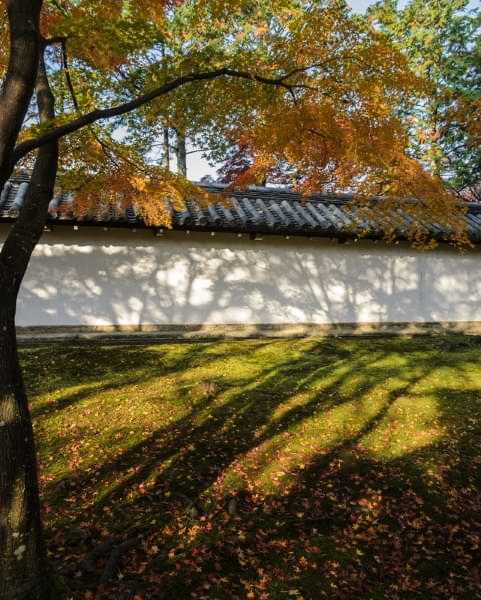
A short way along this road, signs guide us through a gate. Crossing this dividing line, the close-packed buildings of the city are replaced by a spacious wood. A small path wends its way through the bright orange, warm yellow and rich red autumn foliage. The path slopes down into a shallow valley through which flows a small stream.

Look up. Can you see something nestled among the treetops? That is the most recognisable part of this, Kyoto’s largest temple. Contrasted against the bright leaves is the dark wood of the Tsutenkyo, a long walkway and bridge that connects two areas of this vast temple complex.
We climb out of the shallow valley and onto the 100-metre-long Tsutenkyo from the north end. Following the walkway takes us up into the canopy at the centre of this beautiful wood. From the bridge we look back into the valley.
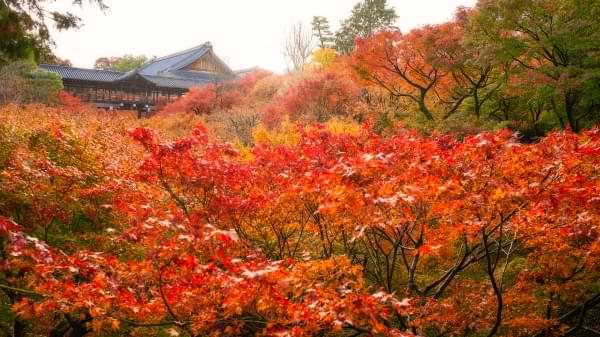
The soothing brush of wind through leaves surrounds us, mixing with the thump of feet on wooden boards. After taking our photos we add our own clomps to the rest, as we make our way to the southern end of the Tsutenkyo.
Wood gives way to gravel as we near the southern garden. At the entrance we take off our shoes and climb the wooden steps up into this garden building. Inside we are hit by the sweet wood smell that pervades Japanese traditional building.
Let’s take a seat on the worn step overlooking the rock garden. We see four clusters of large dark rocks of varying shapes and sizes. Each one a mythical island. Around each island, the grey floor stones ripple. Waves sent crashing against the islands’ shores by a monk’s precise rake. Forests that cling to these islands’ sacred mountains conjured by green moss.

Now we are rested, with reluctance we make our way back to Tofukuji station. Now carrying the peace of Tofukuji in us.
Nanzenji
This time we jump onto a Keihan Main Line headed north, transfer at Sanjo and arrive at Keage station. A not unpleasant walk from here takes us past a number of minor temples, before reaching the western entrance to Nanzenji.
This temple cuddles the forested slopes of Higashiyama. It is hard to differentiate between what is temple ground and what open woodland. Nonetheless, we follow the fiery autumn colours, here dotted with evergreens.
A wide path brings us closer to the Edo era (17th century) Sanmon gate that stands at the centre of the grounds. Let’s join the queue and get a view from the balcony. This vantage point gives us a lovely view out across the woods, past the temple and out onto the slopes of Higashiyama.
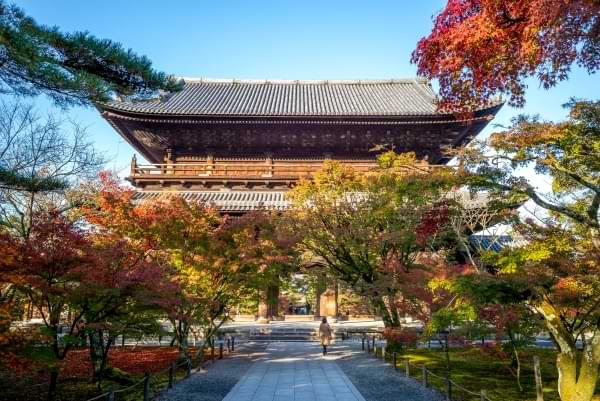
Over there, on the right, we see a hint of red brick. Let’s investigate. Walking over, we come face-to-face with a redbrick aqueduct, an addition from the modernising Meiji era (late 19th to early 20th century). Smaller arches have been built into the supports of the main arch. Couples and friends photograph each other framed by the smaller arches.
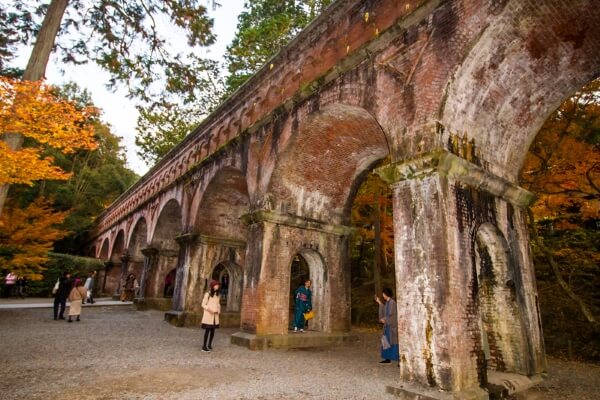
Feel free to take some time to explore this area, I recommend the small walled garden that stands on the slopes overlooking the aqueduct. It’s a pleasant garden that offers some refuge from the crowds. When you’re finished, we’ll get some lunch.

Just outside the northern boundary wall is a delightful tofu restaurant. We are shown through to a tatami room where we sit on the floor either side of a small wooden table. The kimonoed waitress bows and kneels by the table, serving the first course. You open the lid of the bowl and the steam from the beef broth warms you.
When the bowls and bamboo steamers are all empty, we pay at the till and leave. There are no complaints about the 3,000 yen each (£20) bill.
Eikando (Zenrinji)
The route to our next stop is along a narrow path beside a small river, known as the Philosopher’s Path. It is a pleasant journey as the way is lined with trees bursting with autumn colour. It is worth a trip in its own right. After a quarter of a kilometre we arrive at the southern entrance to Eikando.

Through the gate and straight across a stone courtyard the path stops at the entrance to a wooden structure. In fact, it is a complex of structures joined by narrow wooden walkways. In the centre there is a small courtyard pond, overhung by gnarled trees.
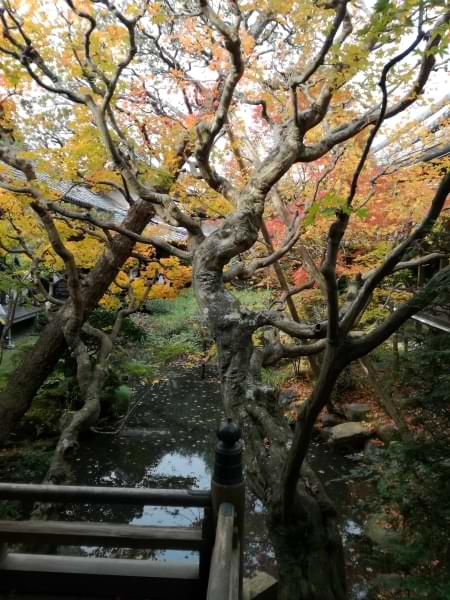
Out of this wooden labyrinth, we climb several stone stairways to a narrow outcrop on the hillside. Here stands the Tahōtō pagoda. From the foot of the pagoda we look down on the Eikandō complex and Kyoto that stretch out beneath us.
On the way down we are taken along the back and down the side of the main temple. It feels as if we have taken a wrong turn, but we are reassured by the crowd. When we pop out in front of the temple, a firestorm greets us. Here it burns a fierce red, there it glows a warm orange, somewhere else soft yellow embers. As if Autumn has hand painted each and every leaf.
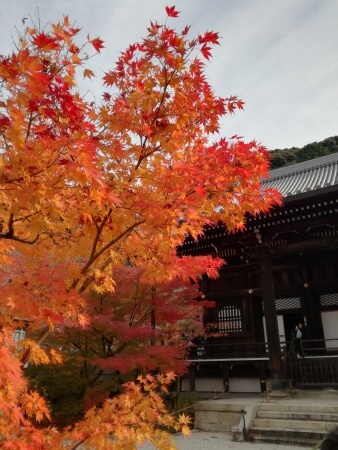
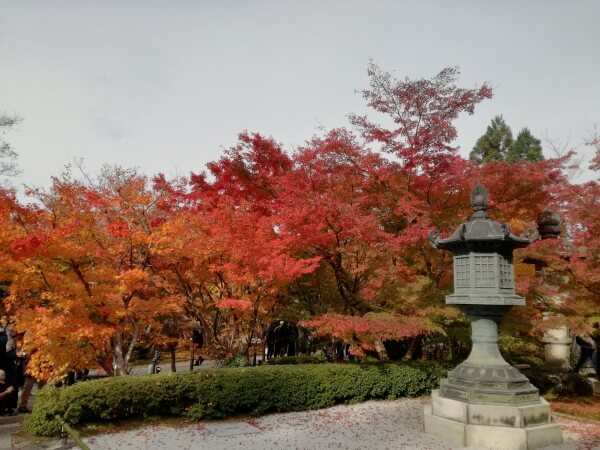
This blanket of colour opens out at the eastern bank of a large pond. Through the gap we get a stunning view across the water. A stone bridge spans the gap from the bank to a small island at the pond’s centre. The trees have gathered to lean over and check their autumn foliage in the mirrored water.
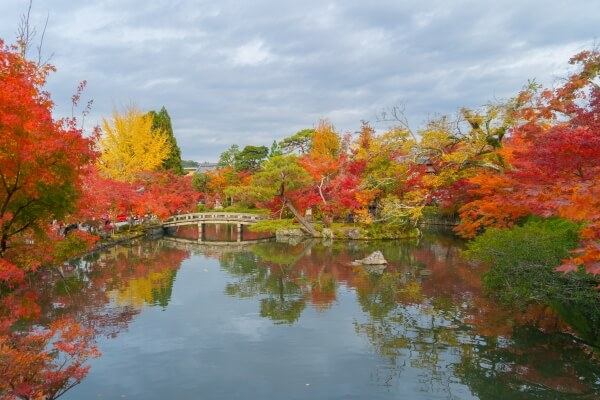
Although we have walked a long way, we say it’s a relief that we’ve not finished yet as we make our way out under a pastel canopy.
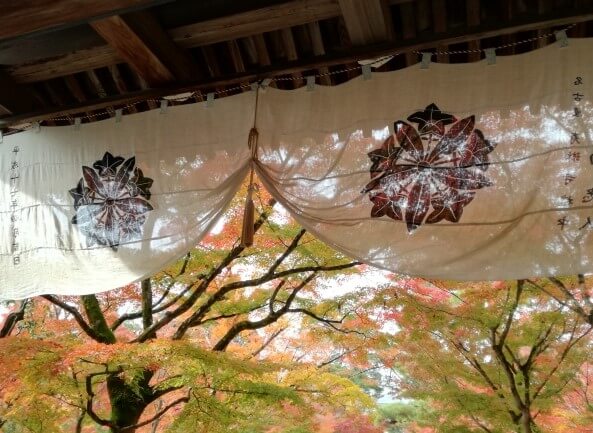
Kodaiji
We catch a bus on the main road and rumble southwest, to Maruyama park. It’s late afternoon and we’re tired, so we stop for tea in the Shimokawaracho district. A delightful, undulating district lined with traditional Japanese buildings. The area is littered with shops, teahouses and restaurants where we recharge our batteries and wait for the sun to set.

Once night has fallen, we make our way towards Kōdaiji. Despite the invitingly lit windows of the izakaya (pub) we continue on. It feels like we have slipped back in time as the street lights here cast a warm orange glow. We climb a set of broad stone steps to the temple entrance.
A set route guides us down corridors of shimmering gold and ruby. Illuminated branches spray out vivid colour across the pitch-black sky above us. At the back of an old wooden house waits a large crowd. Unsure what we’re waiting for, we join them at the edge of a rock garden.

The quiet is broken when gentle music starts. Lights appear, synchronising with the music the lights dance across the surface of the rock garden. A dragon flies across the back wall. Then silence. The “projection mapping”, to use the Japanglish, seems to blur the line between dream and reality. The crowd shuffles off and we do too.
Under Kodaiji’s enchantment, we continue on to a spectacular bamboo grove. The soring green poles are lit by a cool light. A welcome contrast to the warm autumn palette of the day so far. A path that promises further magic winds through the bamboo to the bank of a large pond.
Standing on the other side is a solitary red maple. We almost lose perspective at the sight of the perfect reflection in the velvet black water. For a moment the distinction between water and reflection, sky and reality are lost.

Kōdaiji’s spell stays with us as we return back along the Keihan Main line to Kyoto station. As we return to certain reality.
Return
Regrettably, that ends our autumn daydream in Kyoto. Thank you for coming with me on this covid-proof tour. I hope you enjoyed the sights and were inspired for when we are once again able to travel.
Kōyō viewing is a magical activity and the perfect potion to sustain you in busy city life. There are spectacular sites throughout Japan to enjoy the kōyō season and I encourage you to take the opportunity to experience its spell if you can.
Which other Kyoto kōyō spots do you recommend? Let us know in the comments below.

